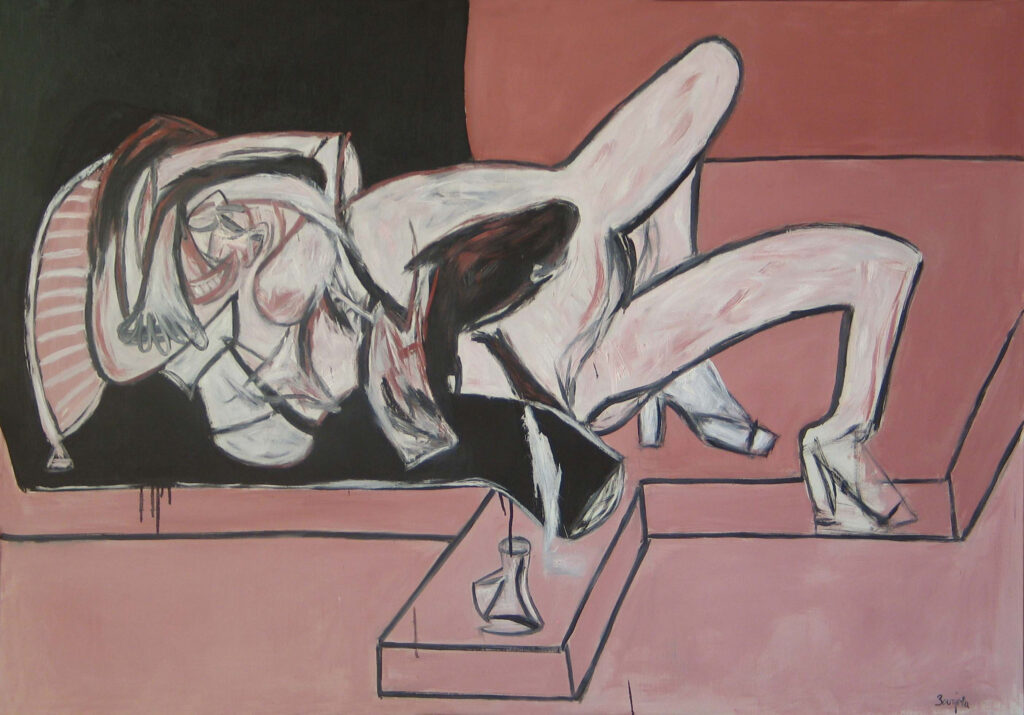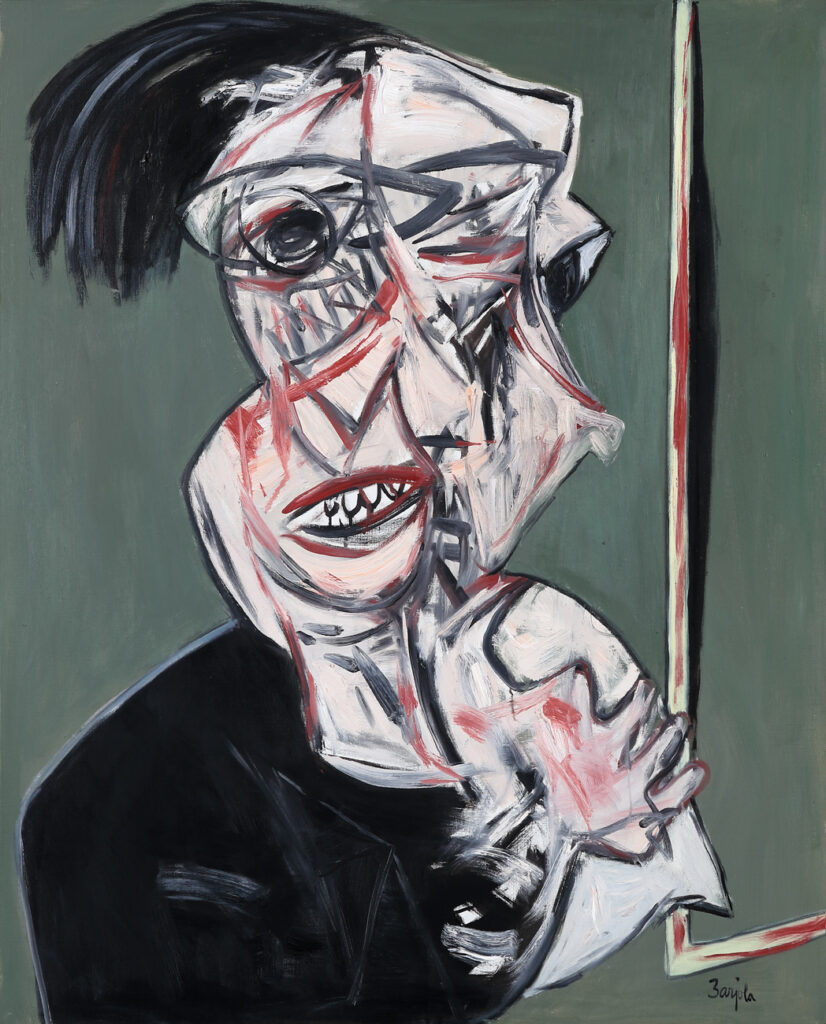Juan Barjola is an essential figure in twentieth century Spanish painting. Over a career spanning more than 50 years, he explored various routes of artistic expression: he toyed with abstraction, blended elements of cubism and expressionism to create dynamic figurative works, embraced the dreamlike environments associated with surrealism and experimented with colour and its absence. A virtuoso of new figuration, Barjola articulated the drama of human existence through energetic, unsettling depictions. Portraits of women or children, scenes of violence, bullfights, crucifixes and dogs are all recurring features in the work of an artist profoundly influenced by the Spanish masters, Velazquez and Goya. His emotionally charged paintings, rich in gesture, irony and pathos, speak directly to the present.
Born in Spain’s south-western region of Extremadura, Juan Barjola studied at the Badajoz School of Arts and Crafts, La Palma School of Arts (Madrid) and San Fernando Royal Academy of Fine Arts (Madrid). In 1960 he was awarded a Juan March Foundation Scholarship, which enabled him to travel and exhibit in France and Belgium. Over 70 individual exhibitions of Juan Barjola’s work have been held since his first solo presentation in 1957, including major retrospectives at the Spanish Museum of Contemporary Art (Madrid, 1987), Fundación Mapfre (Madrid, 1993) and the Valencian Institute of Modern Art-IVAM (Valencia, 2006). Throughout his career, Barjola received numerous awards including the National Prize for Visual Arts (1985), the Medal of Extremadura (1991) and the Tomás Francisco Prieto Prize (2001). The Barjola Museum in Oviedo opened in 1988 and his paintings also form part of major collections including the Reina Sofía Museum-MNCARS (Madrid), the European Parliament Collection (Strasbourg), and the Spanish National Heritage Collection.



